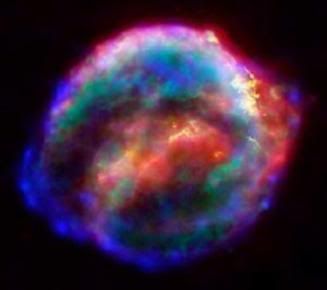|
|
Post by glactus on Feb 20, 2008 7:29:51 GMT
 Kepler's supernova remnant - waves Gravitational waves are produced by violent events in the distant universe, such as the collision of black holes or explosions of supernovas. The waves radiate across the universe at the speed of light. Scientists hope that a new supercomputer being built by Syracuse University's Department of Physics may help them identify the sound of a celestial black hole. The supercomputer will soon receive massive amounts of data from the California Institute of Technology that was collected over a two-year period at the Laser Interferometer Gravitational-Wave Observatory. While Albert Einstein predicted the existence of these waves in 1916 in his general theory of relativity, it has taken decades to develop the technology to detect them. Construction of the LIGO detectors in Hanford, Wash., and Livingston, La., was completed in 2005. Scientists recently concluded a two-year "science run" of the detectors and are now searching the data for these waves. LSC scientists will be analyzing this data while the sensitivity of the detectors is being improved. Detectors have also been built in France, Germany, Italy and Japan.  V-838 - echo  credits: This is part text only. See image, full text and all scientists involved at sciencedaily.com www.sciencedaily.com/releases/2008/02/080208131143.htmimage credit: NASA, ESA, R. Sankrit and W. Blair (Johns Hopkins University)) |
|